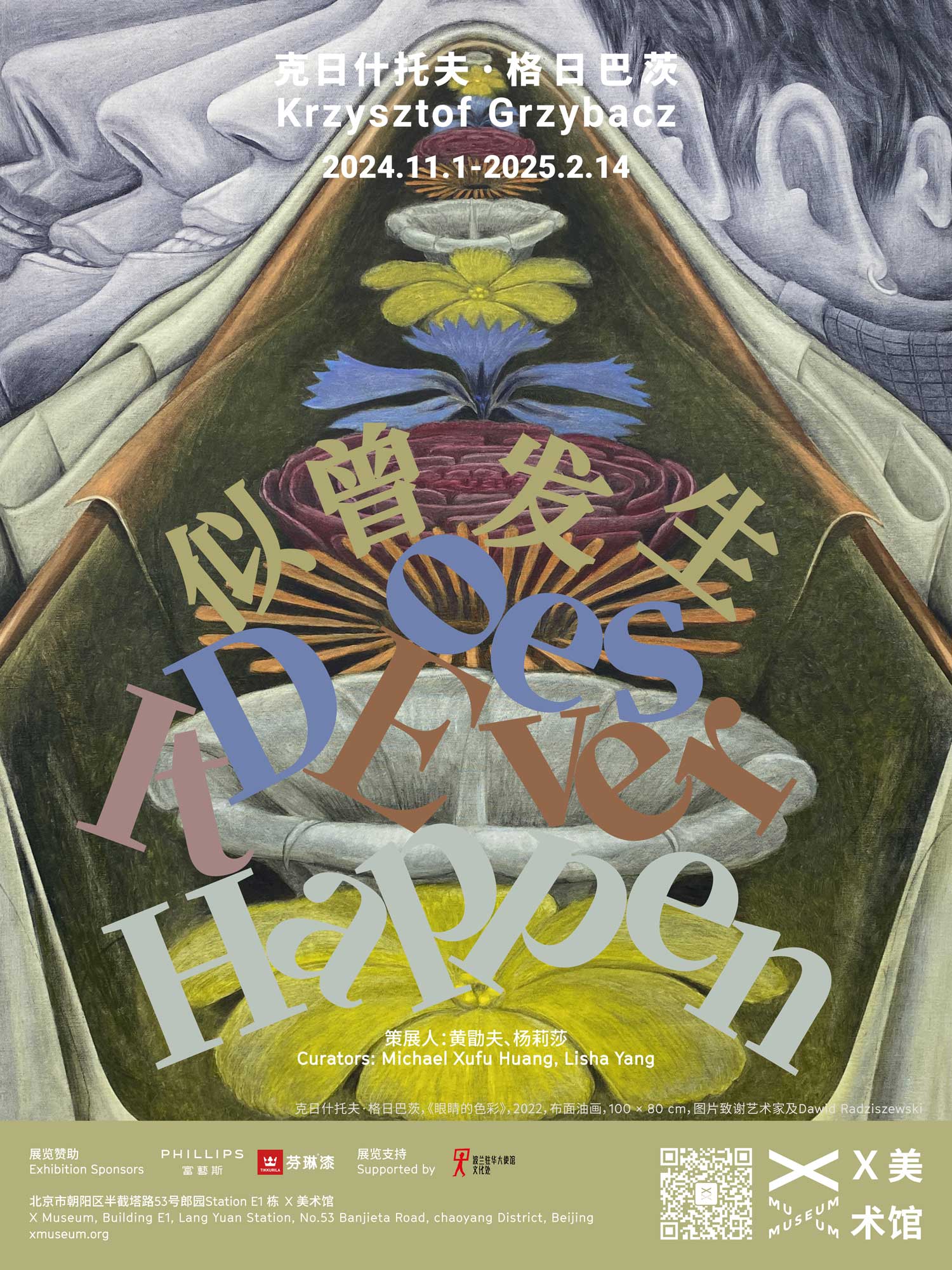X Museum is pleased to present Polish artist Krzysztof Grzybacz’s first institutional solo exhibition, titled ‘Does It Ever Happen’. The exhibition will run from November 1, 2024, to February 14, 2025, in Gallery 1-3 at X Museum in Beijing. It features over 20 works from Grzybacz’s recent practice, including five new paintings and eight drawings created specifically for this exhibition. Raised in a suburb of Kraków, Poland, Grzybacz began exploring painting at a young age, under the influence of his father, an amateur painter. His work draws inspiration from everyday life, capturing moments that are both ordinary and filled with unexpected coincidences. Like many artists who came of age at the turn of the millennium, Grzybacz absorbed much of his worldview through mass media. Television programs from TVP (Polish National Television), whether playful children’s cartoons or experimental, avant-garde animations, have deeply informed his artistic practice, and subsequently materialized in his paintings. Best known for its expressive and surrealistic style, Polish animation prioritizes knowledge over entertainment, establishing a distinctive approach both within Eastern Europe and beyond. Growing up immersed in this environment, Grzybacz’s works are rich in narrative, evoking scenes akin to those found in novels.
Grzybacz skillfully arranges his works in unconventional ways, offering bold perspectives on everyday life, where everything appears to flow effortlessly. The human body often takes center stage in his pieces—whether in conversation, observation, or as a form stretching across the canvas. In his paintings, bodies are transformed, morphing into illusive devices or factories that are both familiar and alienated. Grzybacz blends different perspectives, merging subject and object until an ambiguous pictorial space comes to play. In his work, various forms of teeth and tongues outline the “path” of conversation and language, with each mouth metaphorically establishing a link of communication. Flowers simultaneously represent both what the eyes see and the colors that seem to flow from them. These intangible, bodily moments are made material and visible by the artist.
The formation of society depends on the exchange of information and interconnectedness—individuals alone cannot create a society. In the information age, digital communication technology has ushered in a new era of information sharing, fundamentally transforming how people connect with the world. This innovation also propels the evolution of media, compelling us to reflect on our pre-existing cognitive frameworks and altering the way we form relationships with others and our surroundings. Polish sociologist Zygmunt Bauman captures this phenomenon inMaking the Familiar Unfamiliar, describing how ‘ all the old ways of doing something no longer work, but the new ways have not yet been invented.’
Between this failed past and the impending future lies a constantly shifting society and fragile interpersonal connections, shaped by endless technological iterations and the infinite scroll. In response, Grzybacz chooses to become a sensitive outsider, observing life through the eye of the beholder. He focuses on specific subjects—people, flowers, a scene, or a conversation—observing, dissecting, reassembling, and collaging familiar visual elements. Through his paintings, he examines the meaning of existence, searching for and speculating a new way forward.

